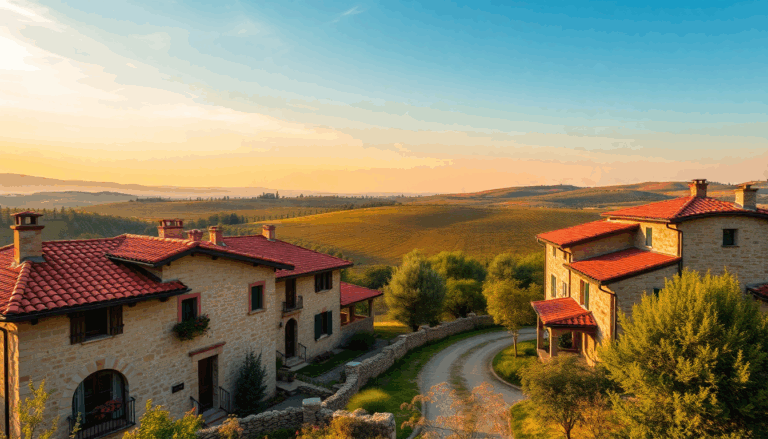The real estate market in Umbria is making waves in 2024, emerging as a vibrant and affordable option for both buyers and investors. In a world often clouded by uncertainty, this picturesque region stands out with an average price per square meter of around €1,054—far below the national average of over
€1,800. For anyone considering a property investment, this is a key statistic. The Housing Market Observatory reports a modest increase of 0.3% in transactions, alongside a steadying of property values. Could this be the perfect opportunity you’ve been waiting for?
Emerging Trends in the Real Estate Market
Mauro Cavadenti Gasperetti, a seasoned real estate agent from the Umbria Real Estate Exchange, believes that now is an ideal time to buy property in the region. With
low prices and an exceptional quality of life, Umbria is perfect for those drawn to the excitement of city life or the serenity of charming historic towns. Just look at the numbers: average home prices in neighboring areas are significantly higher, with approximately €143,400 in the Marche, €198,000 in Tuscany, and even €199,500 in Lazio. In comparison, many properties in Umbria are often priced at less than half of these figures. Who wouldn’t
want to snag such a deal?
It’s no wonder that the total number of transactions in 2024 has reached 10,024, with an overall value surpassing one billion euros. Terni, benefiting from its proximity to Lazio, saw a growth of 1.6%, while Perugia remains stable, accounting for more than 73% of the regional market. After a significant contraction of 12.4% in 2023, the market is showing promising signs of recovery this year. Isn’t it fascinating to see how a region can reinvent itself in the face of challenges?
Economic Opportunities and Financing Trends
Diving into mortgage data reveals that only 38% of transactions are financed, which is a bit lower than the national average of 42%. However, those who do secure financing are currently enjoying more favorable conditions compared to the previous year. The average mortgage amount requested is around €104,700, with a monthly payment of approximately €531—down from previous years. Plus, the average mortgage term exceeds 24 years, and interest rates have returned to manageable levels, creating a welcoming environment for those with solid income prospects. Have you thought about how these factors might influence your own housing decisions?
When it comes to housing preferences, the average size of properties sold ranges from 85 to 115 square meters, making up more than half of total sales. In Perugia, medium-sized units are particularly sought after, while Terni is witnessing a rise in both very small apartments (under 50 square meters) and larger homes exceeding 145 square meters. This trend reflects evolving residential needs. What are your must-haves when it comes to choosing a home?
Market Stability and the Role of Real Estate Agents
In major towns, prices remain stable, with an overall increase of 0.7%. Terni has rebounded with a notable 3.2% rise, while Perugia sees a slight decline of 0.6%. Interestingly, Perugia still holds the title of the most expensive municipality, with an average value of €1,078 per square meter, contrasting with a provincial average of €831. A vital component of the Umbrian real estate landscape is the network of real estate agents. Cavadenti points out that buyers and sellers in this region can greatly benefit from expert guidance, helping navigate everything from bureaucratic hurdles to energy efficiency considerations, not to mention fiscal opportunities and investment value. Isn’t it reassuring to have a professional in your corner?
The role of a real estate agent is particularly crucial for families and young buyers. In an ever-evolving market, having an expert by your side can make all the difference. Are you thinking about reaching out to a professional for your next real estate move?
Looking to the Future
As we look ahead, Umbria is set to become an attractive destination for those in search of second homes, especially with ongoing reconstruction efforts following recent earthquakes and anticipated investments from the National Recovery and Resilience Plan (PNRR). Cavadenti emphasizes that the market is not static; it showcases significant maturity and stability—traits that are invaluable amid economic uncertainties. Isn’t it exciting to imagine how this region can continue to grow and present new possibilities?

